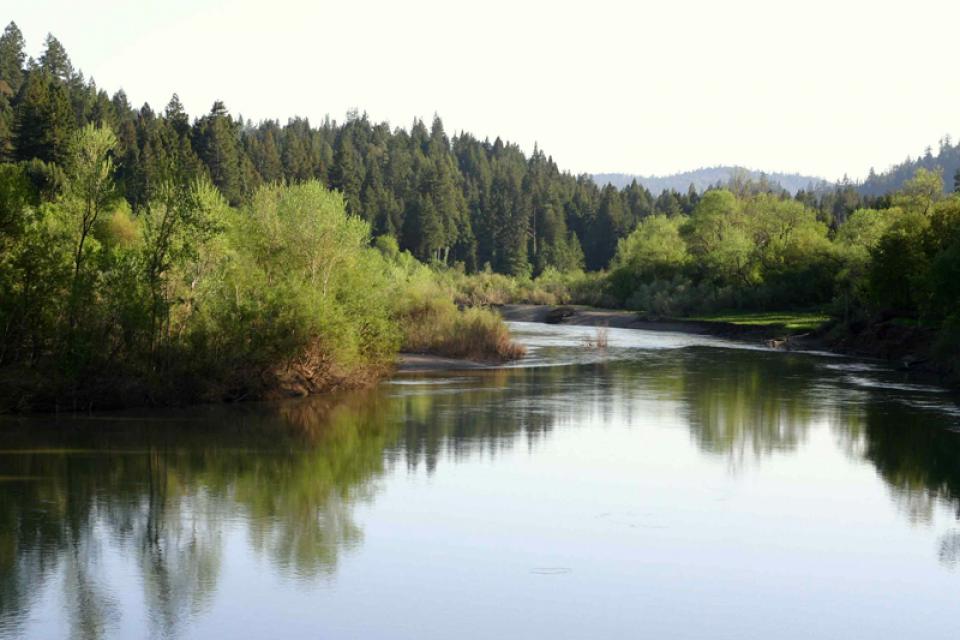Russian River
The Russian River is one of the major northern streams that drain the sparsely populated, forested coastal area that stretches from San Francisco to the Oregon border.
Other North Coast waterways include the Klamath, Trinity, Eel and Smith [see also North Coast Rivers]. These rivers and their tributaries flow west to the Pacific Ocean and account for about 40 percent of the state’s total runoff.
In this region, most of the rivers remain relatively undeveloped. Of these rivers, the Russian River is the most developed river. Along the Russian, federally funded dams have created Lake Mendocino (at Coyote Dam) and Lake Sonoma (Warm Springs Dam). Locally built aqueducts channel water from these lakes into growing Marin and Sonoma counties.
The Russian River, which meanders through one of the world’s most prized wine-producing regions, is one of the most flood-prone rivers in California, routinely overflowing during wet years. As storm systems approach California, the wet bands of clouds are uplifted by the Coast Range, releasing precipitation first and most intensely on the coastal streams. One flood control dam is on the Russian River and one on Dry Creek, a tributary to the Russian River, which can capture about 20 percent of flood flows.
In 1995, for instance, the Russian River broke through private levees along a 10-mile stretch of the Middle Reach section and inundated a series of gravel pits, including a 72-acre pit used for storage of Healdsburg’s secondarily treated sewage. Inundation of these pits threatened to permanently change the course of the river and damage water supplies and fisheries.
Such flooding is one the many challenges the Russian River faces. Drought is another challenge. In 2021, as Russian River reservoir levels plummeted amid drought, the State Water Resources Control Board issued curtailment orders to hundreds of water rights holders in the Russian River watershed, ordering them to stop diverting water from the river. The state warned that without action, Lake Mendocino would be empty before the end of the year. While disaster was averted at Lake Mendocino that year, continued drought in 2022 prompted new curtailment orders. State officials also approved a groundbreaking voluntary sharing agreement that allowed some senior water rights holders with sufficient supplies to share water with those who were curtailed.
Government and non-government groups are tackling these challenges with the aim of providing a river system that balances many competing demands. In an area that was once legacy to massive numbers of salmon and steelhead, restoring the fishery is an overriding matter and has been the basis for much consultation. Meanwhile, water providers must accommodate municipal needs as well as those of grape growers.









